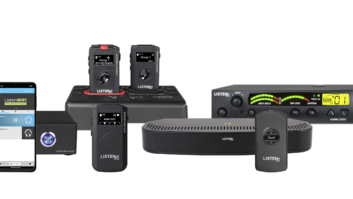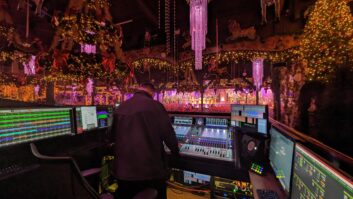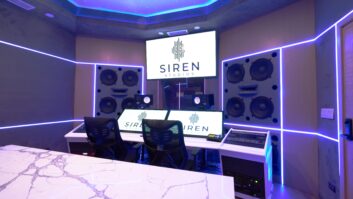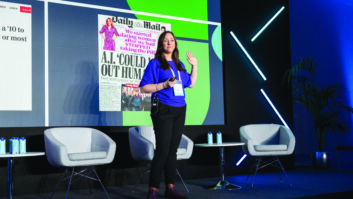 The working world as we know it has been tipped upside-down over the past two years or so. With lockdowns and work-from-home orders impacting on where work got done, almost overnight we’ve all taken a giant leap forward in terms of how we use technology. Microsoft’s CEO Satya Nadella noted, in late April 2020, that during just the first two months of the pandemic, they saw two years’ worth of digital transformation.
The working world as we know it has been tipped upside-down over the past two years or so. With lockdowns and work-from-home orders impacting on where work got done, almost overnight we’ve all taken a giant leap forward in terms of how we use technology. Microsoft’s CEO Satya Nadella noted, in late April 2020, that during just the first two months of the pandemic, they saw two years’ worth of digital transformation.
As the months have gone by, it’s become clear that remote working isn’t going away. In fact, at the time of writing, the [UK] government has just announced the implementation of Plan B: workers must work from home where possible. But even without this disappointing setback in the journey towards normality (or, at least, towards some kind of new normal), the appetite for hybrid working was significant.
HYBRID FUTURES
An Office of National Statistics survey published in June 2021 indicated that 85% of UK working adults wanted to do at least some work at home going forwards, while McKinsey’s survey in May 2021 suggested as many as nine out of ten executives are planning some form of hybrid working for their workforce.
YouGov data from July 2021 is slightly more conservative, but still a clear majority of UK business leaders are in favour: only one in five said they planned to have all workers back on-site five days a week, with 7% asking them to come in one, 12% two, 11% three, and 6% four days a week.
There’s also been a shift in workforce mentality. The pandemic has caused many people to re-evaluate their lives, and many are voting with their feet if their employment does not allow the work-life balance that suits them. It’s even been given a name – more than one, in fact. We’ve been reading about ‘The Big Quit’ or ‘The Great Resignation’ for some months now.
WORKPLACE EVOLUTION
As with the uptake of technology, this trend isn’t purely Covid-related, but also due in part to the generational evolution we’re seeing in the workforce. What has been called ‘The Net Generation’ (AKA digital natives, Millennials, or Generation Y, born between 1980 and 2000) is now making up a bigger and bigger proportion of the workforce – indeed some of its younger members (likely celebrating their 40th birthdays shortly) are by now in senior positions.
Among the variety of characteristics that have been noted, Net Geners trend towards following their own career paths, and they are quite happy to move on to other roles if they don’t feel their needs are being met by their current employer – they also have expectations of employers, including integrity, honesty, flexibility, opportunities for collaboration and learning, access to the latest technology, and an open attitude to innovation. As such, technology has become a critical factor in the attraction and retention of talent, in a labour market that is currently highly competitive.
How does AV tech fit into the picture? Well, while the idea of ‘workspace technology’ might initially have you thinking of personal computers, CRM systems and file storage, but AV is quickly becoming a key part of the mix – across all sectors, and in a variety of workspace types from HQ premises to retail outlets, sports stadia to universities, and even home offices.
So much has had to be reimagined in the workspace with remote working being undertaken in all sorts of organisations. One constant is the need for a digital-first approach to internal communications. This enables organisations to make announcements, deliver updates, and convey essential employee information to everyone at the same time, wherever they’re working. Given the context of post-Covid hybrid working, the Net Generation workforce, and the challenges of attracting and retaining talent, this type of activity is no longer peripheral to the success of operations, it is central to it. It’s a must-have, rather than a nice-to-have.
DIGITAL FIRST
Print posters and notice boards have been superseded by digital signage and video walls, easily updated with the latest news and information, to deliver simultaneous messaging to staff working in any part of the company’s estate, while the same content can be efficiently delivered via an intranet or messaging app to those who are on the road, or at home.
Digital-first not only offers the benefit of consistency of communication across the workforce, but nobody feels like a second-class citizen by receiving information later than anyone else, such as when it’s cascaded down hierarchies. Additionally, paper reduction offers cost- and resource-saving opportunities, as well as increased sustainability and security credentials.
Then there’s the opportunities for employee engagement; for making a dispersed group of people feel like one cohesive team. Aside from the geographical separation challenge, there’s never been more of a need for people to feel a part of something, it’s been a tough two years, with lockdowns and reduced social contact (for some, this continued even when restrictions were relaxed) taking their toll on people’s wellbeing. Even before you factor in caution regarding Covid transmission, with staff working in different locations it may not be feasible to get everyone together for conferences, contract win celebrations or ‘state-of-the-nation’ addresses. A live video stream of an important announcement or employee awards ceremony, or even video-conference social events such as quizzes, can really help to draw everyone together.
BRAND BROADCASTS
Where live video streaming or video conferencing is part of the internal communications strategy, investment in the right kit can make or break the success of this tactic. Specialised video conferencing rooms with best-of-breed technology (device-agnostic, with wireless technology, and high-quality sound and video capabilities) not only streamline the organisation and production of online events, but can be designed to offer an on-brand backdrop and the sort of professional production values that are in keeping with the organisation’s gravitas. And so much the better if there’s a facility which enables blended attendance – where on-site staff can attend in person, while remote staff log in online. With these dedicated spaces properly equipped, senior executives can deliver their speeches with the minimum of fuss, with no delays caused by hunting for cables or ensuring compatible software, therefore ensuring them maximum time efficiency during a busy day.
High-end video-conferencing equipment, in a well-designed dedicated space, also facilitates better collaboration between employees working from different sites – and improving the employee experience in this way offers improved business outcomes such as higher quality work output, more innovative thinking, and improved productivity.
It also ensures that staff are supported in their day-to-day tasks, able to get on with their workload without constantly hitting bumps in the road, such as tech incompatibilities or being unable to find a suitable spot from which to join a Zoom call, which helps keep talent retention high. Naturally, a room and desk booking solution should be employed to ensure that maximum efficiency is being squeezed out of these well-equipped spaces, and that staff are able to secure the space they need, when they need it.
EVOLVED COMMS
In the current climate, the companies that will succeed will be those who evolve their internal communications processes and policies – the cornerstone of their culture – along with improving the employee experience, to match the challenges of talent attraction and retention. With a dispersed workforce (and/or one that involves a proportion of the Net Generation), AV technology is necessarily an integral part of this success, and therefore an essential ingredient in gaining competitive advantage and improving business resilience.







